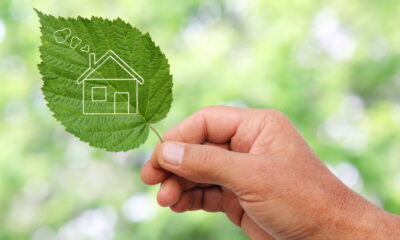You will probably remember the nursery rhyme “polly put the kettle on?” For many of us, making a cup of tea involved just a tea bag and a kettle. However, with all the different specialized loose leaf teas out there, white, green, oolong, and black teas, graduating to a teapot may be the way forward to making that extra special cup of tea while helping the environment.
Benefits of using an eco friendly teapot
A teapot’s one and only function is to brew tea! Simple. I personally like to use a teapot and infuser when using specialist loose leaf tea. Not only does the teapot act as a centerpiece, but it has the added advantage of giving the tea leaves enough room to release all its beautiful aromatic flavors – which makes for a super tasting brew! Being able to keep the teapot covered with the lid also allows for a prolonged experience. Why? Because it keeps the tea warm.
Need help choosing an eco friendly teapot?
There are a wide variety of different teapot options so it can be hard to find which is the best one for you. This is why I thought I’d share with you a list of some of the different types of teapots that are out there and some of the benefits and their environmental properties:
- Cast Iron
These have been around for centuries and are still popular today, with their versatility to be used as a kettle and as a serving pot makes this option appealing. If you decide to use it as a serving pot you are likely to notice that the temperature remains hot for longer than with any other teapot. This type of kettle is better for the environment, because it retains heat longer (thereby reducing the need to use extra energy to keep your tea warm) and doesn’t leave materials that leech into the ground. - Glass
Personally, I love a glass teapot! Visually, you get to enjoy watching the loose leaf tea infusing. Not only does a glass teapot look good but it’s practical too, it’s microwavable and dishwasher safe, making this a must-have for every kitchen. Unfortunately, you can’t have everything and unlike with a cast iron pot, you lose the heat slighter quicker. Glass Isn’t the best for the environment, because it needs to be cast at very high temperatures. However, it is better than plastic that bleaches and doesn’t last long. - Ceramic
Teddy bears’ picnic springs to mind with a delicate ceramic and porcelain teapots, which you can choose from a huge variety of different designs and colors! Again, not a great keeper of the heat! Ceramic is one of the best eco friendly materials, because it is from natural materials and is a good heat insulator. - Silver
If expense isn’t an issue, a beautiful luxury silver teapot is the option you may want to go for. Perfect to bring out and show off for a special occasion. However, i wouldn’t recommend it as an eco friendly option. - Steel
- Steel is another very popular material for making tea cups. It is also a very environmentally friendly metal compared to other metals that don’t last as long.
- And finally, the chocolate teapot – no good to anyone!
Most importantly- how do you make the best cup of loose-leaf tea?
Ideally, for cost effectiveness, you will want to invest in a more sustainable option. You can even use one that is disposable if the material is biodegradable. A number of new infusers are made from recyclable paper that doesn’t leach into the ground. Using a basket infuser to place in your mug or pot, will last you many years especially if you look after them.
Next, you will want to select your loose leaf tea, Whether you are in the mood for a green tea or herbal tea, finding the right tea for you is important.
Is Your Tea Pot Environmentally Friendly?
There are a number of reasons that tea pots are better for the environment than a number of other kettles that were made before them. However, it is still important to choose one that is made from the right materials. You will find that a lot of materials that are more sustainable than others.

































